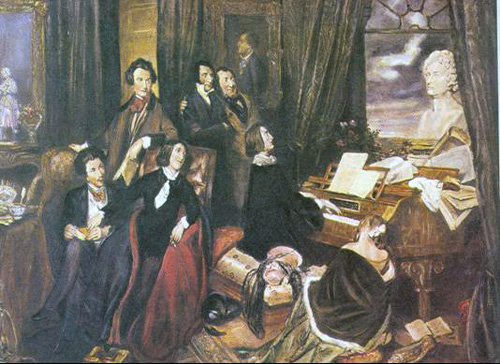Culture isn’t just about art, music, or fashion—it’s about movements that challenge norms, shift perspectives, and reshape entire societies. From artistic revolutions to civil rights struggles, these movements have influenced politics, philosophy, and the way people see the world. Here are 10 cultural movements that left a lasting impact on history.
The Renaissance (14th–17th Century)
The Renaissance was more than just pretty paintings—it was a rebirth of knowledge, art, and humanism. Beginning in Italy, this movement revived classical Greek and Roman ideas, leading to breakthroughs in science, literature, and philosophy. It produced icons like Leonardo da Vinci, Michelangelo, and Shakespeare, setting the foundation for the modern world.
The Enlightenment (17th–18th Century)
Also known as the Age of Reason, the Enlightenment emphasized logic, science, and human rights over superstition and absolute monarchy. Thinkers like Voltaire, Rousseau, and John Locke promoted democracy, freedom of speech, and the separation of church and state—ideas that fueled revolutions in America and France.
Romanticism (Late 18th–19th Century)
Romanticism was all about emotion, nature, and individualism, reacting against the cold rationalism of the Enlightenment. Poets like Wordsworth and Byron, composers like Beethoven, and painters like Turner embraced beauty, imagination, and the sublime, influencing everything from literature to nationalism.
The Industrial Revolution (18th–19th Century)
More than just machines and factories, the Industrial Revolution changed how people lived, worked, and thought. It fueled urbanization, mass production, and social reform movements while inspiring literature like Frankenstein, which questioned the consequences of unchecked progress.
The Harlem Renaissance (1920s–1930s)
This explosion of Black art, literature, and music in Harlem, New York, redefined African American identity and culture. Writers like Langston Hughes, musicians like Duke Ellington, and artists like Aaron Douglas created a cultural movement that influenced everything from jazz to civil rights.
The Beat Generation (1940s–1950s)
Before the hippies, there were the Beats—poets and writers who rejected consumerism, embraced free expression, and questioned authority. Figures like Jack Kerouac, Allen Ginsberg, and William S. Burroughs paved the way for countercultural movements, challenging mainstream norms through literature and lifestyle.
The Civil Rights Movement (1950s–1960s)
This wasn’t just a cultural movement—it was a fight for justice. Led by figures like Martin Luther King Jr. and Malcolm X, the Civil Rights Movement ended segregation in the U.S. and inspired global movements for equality, proving that activism can change laws and societies.
The Feminist Movement (1960s–Present)
From securing voting rights in the early 20th century to advocating for workplace equality and reproductive rights in the 1960s and beyond, feminism has reshaped society. Figures like Gloria Steinem and movements like #MeToo have continued the push for gender equality worldwide.
The Counterculture of the 1960s
The 1960s counterculture was all about questioning authority, rejecting war, and embracing peace, love, and rock ‘n’ roll. From Woodstock to anti-Vietnam protests, this movement changed attitudes toward politics, personal freedom, and artistic expression, leaving an enduring impact on music and activism.
The Digital Revolution (1980s–Present)
The rise of the internet, social media, and digital culture has transformed how people communicate, create, and consume information. From online activism to the influencer economy, this movement has reshaped global culture, blurring the lines between art, politics, and everyday life.
Cultural movements don’t just change art or philosophy—they redefine entire societies. Whether through intellectual revolutions, political activism, or creative expression, these moments in history have shaped the way people think, live, and interact with the world. And with culture constantly evolving, the next big movement is always just around the corner.

